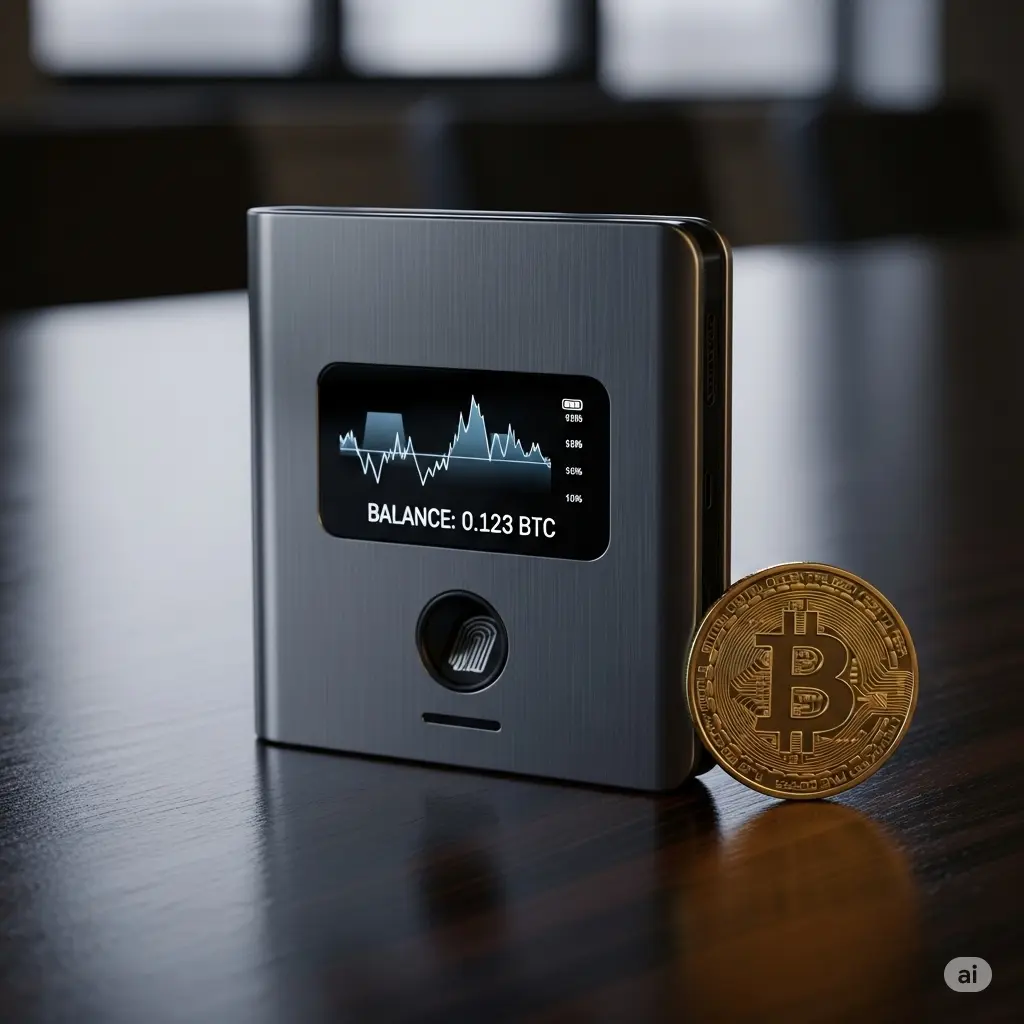If you want peace of mind in crypto, using a properly configured Secure Crypto Wallet especially a hardware or cold storage wallet combined with disciplined practices like strong seed phrase management and secure wallet backup is the best defense. This guide shows you exactly how to choose, set up, and use wallets safely.
Why the Secure Crypto Wallets Guide Works
Being from Global Crypto Sports, we focus on delivering news‑style trust with practical advice. We’re passionate about security, yet we explain things in clear, human, and engaging language. Moreover, we’re not promoting a single brand rather, we build trust by offering variety, tips, and expert‑backed best practices.
Table of Contents
- Understanding the Landscape: Cold vs. Hot Wallets
- What Makes a Wallet Truly Secure Crypto Wallet
- Best Crypto Wallets of 2025: Hardware, Mobile, and Decentralized Options
- Destination Highlights: Wallet Use Cases (Home, Travel, Events)
- Practical Setup and Safety Tips
- Safeguarding Your Seed Phrase & Wallet Backup
- Common Myths & FAQs
- Final Thoughts from Global Crypto Sports
1. Understanding the Landscape: Cold Wallet vs. Hot Wallet
In essence, you need to decide between:
- Cold Wallet: Offline, often hardware devices. Best for long-term storage.
- Hot Wallet: Online or software-based, like mobile or desktop apps. Best for frequent use.
Pros and Cons
Cold Wallet (e.g., hardware, paper wallets)
- Pros:
- Fully offline, highly resistant to hacks.
- Ideal for long-term savings.
- Cons:
- Inconvenient for daily trading.
- Slight risk of physical loss or damage.
Hot Wallet (e.g., mobile wallet, desktop wallet, browser extension)
- Pros:
- Instant access, great for spending or trading.
- Cons:
- More vulnerable to phishing, malware.

In 2025, smart users often pair both: store long-term holdings in a hardware wallet, while using a secure mobile app for daily needs.
2. What Makes a Wallet Truly Secure Crypto Wallet
To call a wallet secure, consider these key criteria:
- Private Key Control: Only you handle your keys.
- Strong Encryption: Data is encrypted at rest.
- Backup Options: You can restore using a seed phrase or similar tool.
- Open Source or Audited: Transparency builds trust.
- User-Friendly Security: Helpful UX without lowering safety.
- Hardware Protections: For hardware wallets, physical PIN codes and tamper detection matter.
3. Best Crypto Wallets 2025: Hardware, Mobile, and Decentralized Options
Here are reliable choices that align with the best crypto wallet 2025 trends.
Hardware Wallets (Cold Storage)
1. Ledger Nano X
It remains popular due to high security, Bluetooth support, and wide coin coverage. Always buy from official channels.
2. Trezor Model T
Clear touch screen, open‑source firmware, and strong community trust. A stalwart in the hardware wallet world.
3. Coldcard Mk4
Bitcoin‑only, extremely security‑driven, with air‑gapped transaction signing.
Mobile & Hot Wallets
4. Trust Wallet
User‑friendly mobile interface, built-in DApp browser, and supports many tokens.
5. MetaMask Mobile
Great for DeFi and NFTs, with MetaMask’s multi‑chain support.
Decentralized Wallets (Desktop / Browser-based)
6. Exodus
Sleek design, built-in exchange, and strong user focus.
7. Wasabi
Privacy‑focused and open‑source, great for Bitcoin anonymity.
Each wallet qualifies as a Secure Crypto Wallet when used with care, and each matches a different user need: long‑term security, mobile access, or privacy.
4. Destination Highlights: Wallet Use Cases
Let’s think of each wallet style as a travel destination. This “destination” metaphor helps you match function to occasion.
A. Safety Haven – Your Home Setup
- Choose a hardware wallet like Ledger or Trezor.
- Keep boxed and offline.
- Store your seed phrase in a fire‑safe or bank deposit box.
- Use for long‑term savings.
B. On-the-move Hub – Mobile Access
- Load Trust Wallet or MetaMask Mobile.
- Use strong app lock (PIN, biometrics).
- Only install from official app stores.
C. Remote Adventure – Privacy-Focused Use
- Use Wasabi for private Bitcoin transactions.
- Use Exodus for easy multi‑asset use and swapping.
5. Practical Setup and Safety Tips
Here’s your step‑by‑step “packing list” for security:
- Buy Official: Always order hardware wallets from official stores or verified resellers.
- Initialize Offline: Set up your device directly from the box; avoid online initialization.
- Create a Strong PIN: Use a PIN that isn’t easily guessable.
- *Write Down the Seed Phrase: On paper or metal—never store digitally.
- Create Multiple Backups: Keep at least two secure, geographically separated backups for redundancy.
- Test Wallet Backup: Practice restoring with your wallet backup to confirm it’s reliable.
- Update Firmware Carefully: Only apply official updates from the manufacturer.
- Phishing Awareness: Never click on unknown links. Always verify URLs—especially when using browser‑based wallets.
- Use Multisig When Available: Services like Coldcard or some decentralized wallets allow multi‑signature, adding a strong extra layer.
- Separate Funds: Keep a small amount in a hot wallet for daily use; cold store the rest.

6. Safeguarding Your Seed Phrase & Wallet Backup
Your seed phrase is your last line of defense. Here’s how to protect it:
- Material: Use metal backup plates—they withstand fire, water, and decay.
- Storage Locations:
- Home: Fire‑resistant safe.
- Safe deposit box at a bank.
- Trusted family member or legal custodian storage.
- Geographic Separation: Store backups in different cities or even countries.
- Secret Splitting: Use Shamir’s Secret Sharing to split your seed phrase into parts—only some pieces are needed to restore.
Real‑life tip:
If you live in a humid or disaster‑prone area, metal backups help avoid rot or mold—especially relevant for regions like Bangladesh or coastal zones.
7. Common Myths & FAQs
Mythbusters
Myth 1: “Device must always be online to access my crypto.”
No—hardware wallets are offline by design and only connect when you want to transact.
Myth 2: “If I lose my wallet, it’s gone forever.”
False—your seed phrase restores access. Just don’t lose that.
Myth 3: “A hot wallet is inherently unsafe.”
Partially true. They’re more exposed—but with good hygiene, they can be reasonably secure for daily use.
FAQs
Q1: Which is more secure: hardware or mobile wallet?
Answer: Hardware (cold) wallets are more secure because they store keys offline. Mobile (hot) wallets are convenient but need stronger vigilance.
Q2: How often should I back up my hot wallet?
Answer: After every new address or major transaction change. Export your backup phrases securely.
Q3: Can a hardware wallet get hacked?
Answer: Only if you fall for phishing or enter your PIN on a compromised device. It has strong physical protection.
Q4: Should I write my seed phrase digitally?
Answer: Never. If a hacker obtains it, they get your funds. Always go analog.
Q5: What if I suspect malware on my phone?
Answer: Immediately move funds to a clean device or hardware wallet—then reset phone safely.
8. Final Thoughts from Global Crypto Sports
You’ve now got a complete, user‑friendly guide to choosing and using a Secure Crypto Wallet in 2025. From cold wallet staples to handy mobile options, plus real tips about seed phrase security and wallet backup, this guide empowers you to take control.
At Global Crypto Sports, we value accuracy, engagement, and your security. Follow this guide, stay aware, and rest assured—your crypto‑journey can be both exciting and safe.
